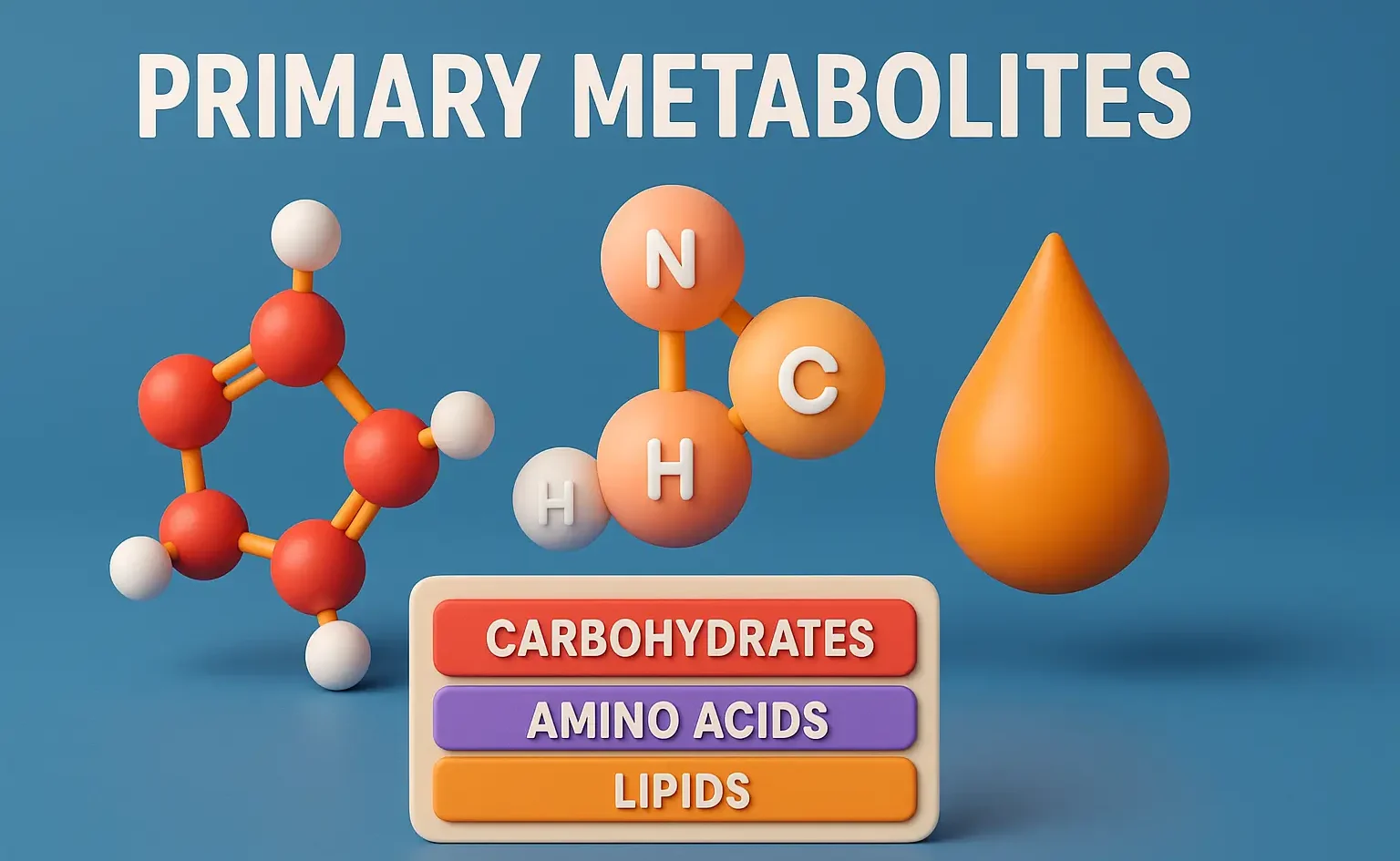Introduction to Primary Metabolites
- Primary metabolites are essential biochemical compounds required for the growth, development, and normal functioning of living organisms.
- Many Primary Metabolites have pharmaceutical and industrial applications.
- Unlike secondary metabolites, they are universally present and play a key role in metabolism, energy production, and cellular processes.
Characteristics
- Essential for survival and metabolism.
- Continuously produced in large quantities.
- Universally found across all life forms.
- Involved in fundamental biochemical pathways.
- Widely used in pharmaceuticals, food, and industry.
Classification and Examples
-
Carbohydrates (Energy sources & structural components)
- Examples: Acacia, Agar, Tragacanth, Honey.
-
Proteins and Enzymes (Structural and catalytic functions)
-
Lipids (Waxes, Fats, Fixed Oils) (Energy storage & membrane components)
- Examples: Castor Oil, Chaulmoogra Oil, Wool Fat, Beeswax.
-
Marine Drugs (Bioactive compounds from marine sources)
- Examples: Novel medicinal agents with pharmaceutical applications.
These metabolites have significant roles in medicine, cosmetics, and industry. Would you like details on a specific category?

